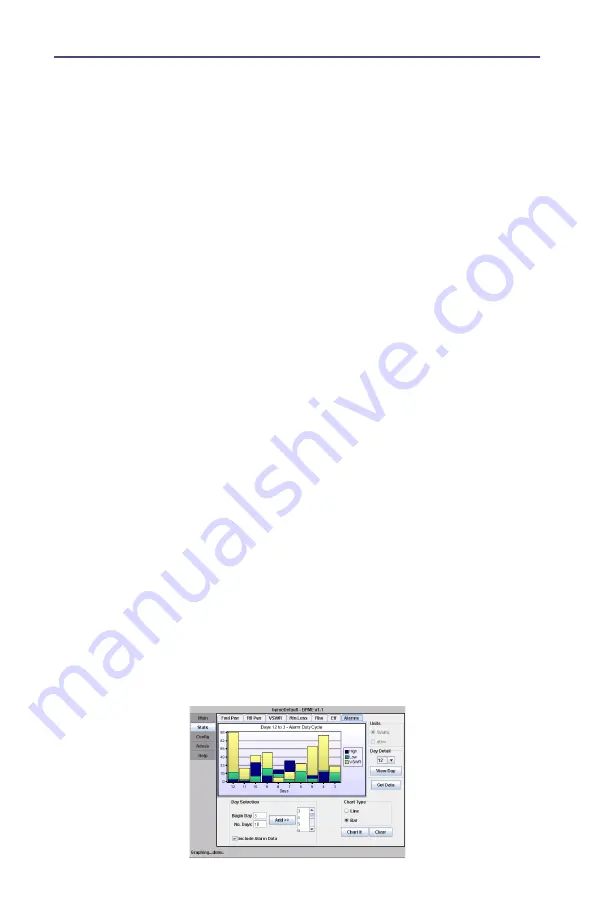
Operating Instructions
22
Example -
Comparing data from days 3-6 to days 203-206 on the
same chart. You can view the days you've selected by scrolling the
list to the right of the
Add >>
button under
Day Selection
.
Note:
The more days you view, the longer it will take to chart
them.
2.
Include Alarm Data
a.
Check the
Include Alarm Data
check box.
Note:
This will retrieve alarm data for each selected day and gen-
erate a new alarm chart. The chart will be shown under the
“Alarms” tab. See the figure below for an example of an alarms bar
chart.
3.
Choose Chart Type
a.
Select the chart type:
Line
or
Bar
.
Note:
A line chart will plot the data as a simple connected line
graph with data values on the y-axis and the time units (days or
hours) on the x-axis. The line chart has no day limit and can also be
used to plot hourly data.
Note:
A bar chart will plot the data as vertical bars - one for each
day - with the days on the x-axis and the data values on the y-axis.
You can use the bar chart to plot up to only 12 days at once.
Note:
Hourly data is logged with hour 0 as the first hour of the
day and hour 23 as the last hour of the day.
4.
Chart the Selection
a.
Click the
Chart It
button to retrieve the data and generate a new
chart.
b.
Click
Clear
to clear your day selections.
Note:
Once the chart has been displayed you can browse the vari-
ous graphs for each power scale and alarms by clicking on the
appropriate tab at the top of the chart. Each chart is plotted in a
similar fashion - from the least-recent to the most-recent data
value acquired - when reading from left to right along the x-axis.
Figure
10
Alarms Screen






























